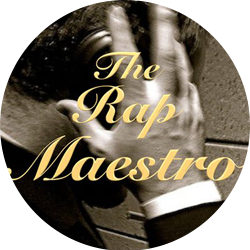(by guest author, John Mattessich)
“What it is, you know, we know
What it is, they know, y’all know
What it is, you don’t know? Here it is”
– “Auditorium,” Mos Def
One of the primary types of references one hears in Hip Hop is a rapper actively referring to her (or him) self. The form this reference takes varies from one rapper to the next, even from one song to the next, but suffice to say a certain self-aware referentiality permeates the genre. To Hip Hop listeners this kind of self-reference may seem arbitrary to point out, since it is so common. Yet, certain issues arise when we ask ourselves the question: “Who is rapper X referencing when they reference themselves?” The nature of this self-reference is worth dissecting, as it will shed some light onto what is called a “mode of listening.” Essentially, a mode of listening refers to a set of practices that contribute to a culture of listening within a tradition. It is a combination of “what” and “how,” with respect to the music itself. Scholars say that listeners who are asking and answering these questions for themselves, even unconsciously or subconsciously, are “enculturated.” listeners.
The nature of “enculturated” listeners is also a giant rabbit hole of mystery; entire books are written about who the “audience” for an artform is. I’ll touch on it briefly in order to move on and not return: I will be considering “enculturation” to be an active, meaningful, and genuine engagement with rap music. This definition leaves plenty of ambiguous room for subjective meaning to plant itself in the crevices of objectivity.
In order to explore these modes of listening a little bit more, our mode of exploration needs to be established. In order to find answers, we need to fashion questions that are suitable to our exploration. Regarding “meaning” in music, these interpretations are necessarily subjective, and in a genre like Hip Hop, meaning and experiences, while they can be highly relatable, are intensely personal. To reflect this individual dynamic, one might (and I will) fashion an endeavor using the following guidelines:
- “What could an enculturated listener be listening for?” rather than “what does an enculturated listener listen for?”
- “How could an enculturated listener respond to the music?” rather than “how does an enculturated listener respond to the music?”
When we posit musical meaning as a realm of possibility rather than a search for definitive truth, we open ourselves to a greater variety of musical experience; when we allow ourselves the possibility of hearing things in the “wrong” way, the meaning we create in the music becomes interpretive, active, responsive.
Returning to the notion of self-reference then, the question we have to ask ourselves is not “who is [rapper X] referencing when they reference themselves?” as our inquiry becomes tautological and… meaningless. Instead, we have to put the cart before the horse. If we ask ourselves “how can I interpret this self-reference? How does [rapper X’s] self-reference affect my experience of the music?” then we set ourselves up for an inquiry that allows us to answer the question “who is [rapper X] referencing when they reference themselves?”
As an exemplar of our abstract [rapper X], consider Xzibit’s second single from his Restless album, “X.”
With production from Dr. Dre as well as Scott Storch and Mel-man, the single helped catapult Xzibit, who by that point in time had a significant foothold, to the forefront of mainstream West Coast Hip Hop in 2000. The song serves as an example of a common trope in Hip Hop, that is, bragging about one’s skills as an MC and presence within the culture. Among claims of building up his image while staying close to his roots, he also highlights the fact that he is surrounded by desirable circumstances (i.e. weed, women, and money).
The importance of these claims lies not in their validity, but merely in the fact that they exist. In reference to the Mos Def quote at the beginning of this article, it’s generally assumed that we (the listener) know “what it is,” even when “it” is unspecified. Somewhat paradoxically, “it” defies categorization; it merely exists. This is why we don’t have to worry about the truth in Xzibit’s claims, because although they portray him as “successful” (at least, the construction of success within his industry), it is not their portrayal of him that draws the listener to the music. Any rapper worth their salt can brag about their money. Where nuance comes into play, and the point at which most “hip-hop-haterz” are lost is in determining whose method of bragging is the most artful. The subject of the song is Xzibit himself, but the focus of the music isn’t necessarily the same as the subject (side note: Melville’s Moby Dick is about a sailor on a whaling ship, but the novel isn’t really about whaling); the image draws you in, but for listeners who are familiar with other rappers who brag about themselves, it’s the style, the swagger, the intertexts that keep you coming back. It isn’t him, it is what it is, and if you don’t know, now you know. https://youtu.be/Yix96Oi_R_s?t=71
Xzibit positions himself within the framework of the song, of the culture, and thus, as a cultural object, whose image is explained using an inherited cultural framework.
In explicitly declaring himself to be integral to the design of the song, he becomes a physical, spiritual, ideological, political, and musical manifestation of Hip-Hop as a cultural entity. Open declarations of formal structure/design considerations as musical material are integral to hip-hop’s musical fabric. Kurtis Blow’s “The Breaks” posits another typical characteristic of Hip-Hop as a musical subject, and in the case of Kurtis Blow, this reference is to an explicit musical event: the break.
As in “X,” the subject of the song and the focus of the song are not necessarily the same, and situation within cultural context can help create an intertext that provides more nuance to what is otherwise a cut and dry musical event. He begins the song with a direct address to the audience, or the musical equivalent of breaking the fourth wall, encouraging participation from us (the active listeners): “Clap your hands everybody/if you’ve got what it takes/’cuz I’m Kurtis Blow and I want you to know/that these are the breaks,” as you can hear here:
“The Breaks” that he is referencing are drum breaks, or sections of a record that were exclusively drum fills that early DJs would loop so that people could dance to them. A full explanation of the history of Hip Hop and “the breaks” would be helpful here for those unfamiliar, but it will suffice to say that “the break” was the genesis of the genre, and retained cultural importance even as the medium shifted towards recorded audio in the 80s. Thus in his declaration, not only is he acknowledging the history and traditions of the genre, but he is inviting the audience to partake in those traditions, to become an active part of them. His proclamation: “these are the breaks!” is not merely an allusion to the past, nor does it serve only as a delineation of formal structure. While it achieves both of these functions simultaneously, its primary motivation is an imperative one: These are the breaks! This is the time to manifest energy that created this artform! This is the place to express yourself, to take part in the tradition! Dance, let loose, let the moment, the music, the energy move you!
The subject of the song is “the break,” and one could argue that the focus of the song is the also in the break, but that would be selling ourselves short as knowledgeable interpreters. Within the breaks, a space is created for the listener to project herself onto the music; appreciation becomes interactive: a dance break is incomplete without a dancer.
So now that our metaphorical cart contains Xzibit and Kurtis Blow, the task of pulling falls on our horse, or on ourselves as listeners/interpreters. Here we have two examples of songs whose self-referentiality blurs the lines that separate artist and medium: Xzibit is not just performing a song within a Hip Hop style, he is positing himself as a manifestation of the style. He tropes braggadocio and becomes the medium, such “stuff” as Hip Hop dreams are made on. Likewise, the explicit referentiality of “The Breaks” turns the actual drum breaks within the song into marked cultural entities; they are elevated to a greater significance then being merely functional/danceable. The listener encounters the reverential referential with Kurtis Blow: a celebration of the most basic of structural elements that make up the musical lexicon. As in “X,” we are brought into dialogue with Hip Hop’s cultural fabric as our encounter is centered on the simultaneous conception and parsing of Hip Hop’s “stuff.”
As in the tradition of sampling, this referentiality loops a cultural entity — Xzibit’s success — and turns it into a structural one, that being the topic which can be heard in Xzibit’s superior rapping abilities. In the case of “The Breaks” it loops a structural entity and imbues it with new cultural significance, as the breaks become “The Breaks.”
An understanding of self-referentiality in Hip Hop as stemming from the process of sampling leads us back to where we started with our initial question: what’s in a reference? Paradoxically, nothing and everything. The artifice of Hip Hop is based on lived experience, so that the meaning of a reference can only be another reference, and these chiasmic references reinforce one another: the art of Xzibit’s rapping abilities takes precedence over the actual claims he is making, but we can only believe his claims if we judge them to be believable, based on his ability.
In this sense, referentiality is actually just what brings that anonymous “stuff” into being, “stuff” being the abstract concepts that arise intertextually throughout the genre. The subject of a reference is removed: Xzibit becomes the medium through which swagger emerges, yet we interpret this specific reference as being distinctively Xzibit-y; he becomes a lens through which we the listeners can view a common underlying theme in the genre. A break removes a drum beat from its original context, yet even when we interpret it as being foundational in a new context, it retains some of its original cultural ties; the sampled song influences our interpretation of the new song, and the new song influences our interpretation of the sampled song. Referentiality allows us to create new intertexts and assign new meaning to familiar cultural entities.
This is ultimately what informs a Hip Hop-oriented mode of listening; as subjects of self-reference become the manifestation of cultural entities, we (the listeners) will give these cultural entities meaning through the act of interpretation. The music exists as we listen to it and meaning arises as we project our own meanings onto it. No two listeners have the same experience listening to the same song, so necessarily the issue of determining what a song “means” becomes an exercise in futility. Interpreting self-referential music requires a self-referential mode of inquiry. Because of this, a better question to ask ourselves is this: what is it that I am listening for in this music?
Well…you already know what it is.

